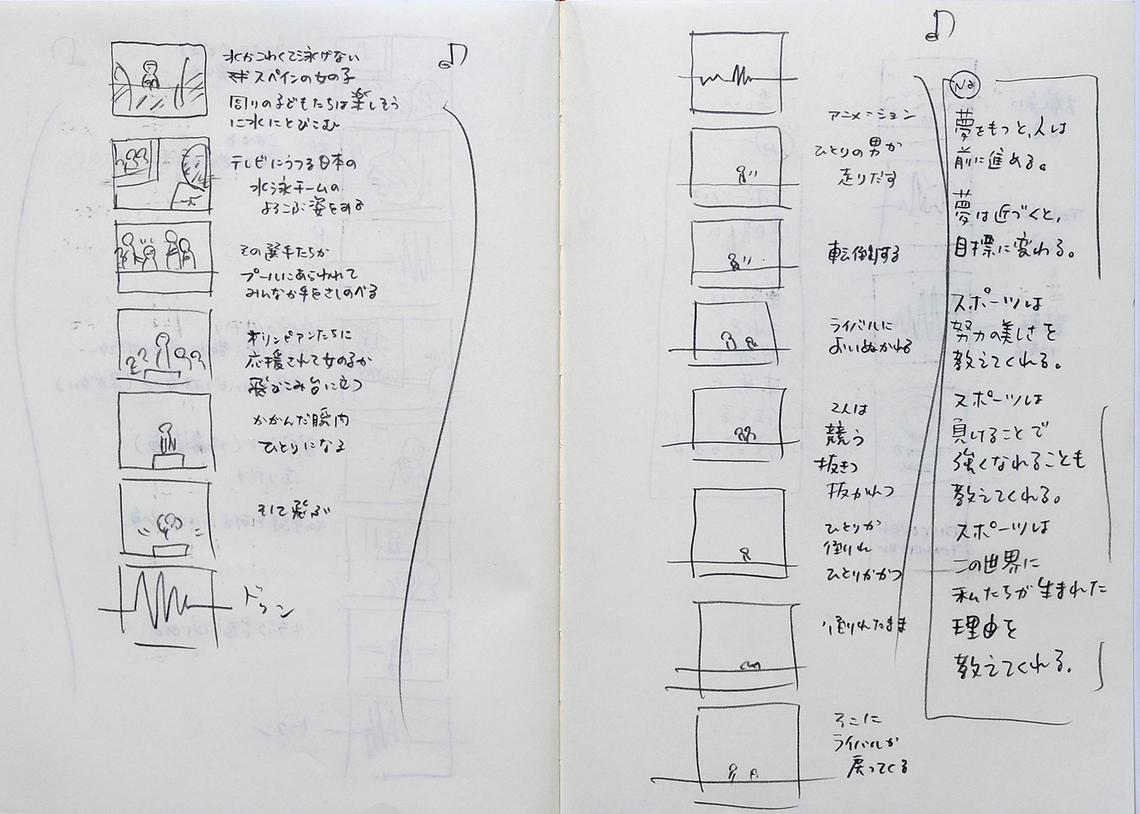Words, Visuals, Sound: Three Core Technologies
To Encounter a New Self—Takuma Takasaki, recipient of the 2013 Creator of the Year award. This was his second win following 2010, and he reflected that continuously pushing himself has led to his current position. As a professional who has earned trust and recognition, he discussed how to sincerely engage with the creative world, drawing from his own experiences.
[Part 1] The Work of Artificially Creating Miracles
Can everyone truly think, "Let's do it even if it means taking risks"?
Lately, I've been fortunate to work with brands and companies across truly diverse genres. Since we often build brands with continuity as the premise, I constantly feel the weight of responsibility, almost like a stinging sensation. Honestly, I'd love to make commercials that feel like "hit and run," but that's not feasible. Launching a campaign requires verification from every angle, and as the scale grows, each individual action becomes heavier. This often leads to communication that lacks sharpness. But we mustn't let that be an excuse to make it boring. Making it boring is really easy; it can happen anytime if we let our guard down. That boring germ lurks, changing form, waiting to pounce on our expression. So we can never let our guard down. We must always be ready for battle.
But there's a silver lining. It instills a resolve in everyone involved: "This is no time for business as usual." That resolve becomes the courage to overcome risks. And when you cross that line, you find fruits that simply avoiding risk could never yield. Unless clients take risks, the creative "leap" needed to achieve results beyond expectations will never happen. That might be the most crucial ingredient for successful creative work.
Anyone can probably come up with interesting ideas. What matters is whether you have the power to realize them, whether you can create the environment to make them happen, and whether you can get the judgment to make it happen. Fortunately, I've been entrusted with long-term relationships with various clients. That's a huge factor. I truly feel that I'm allowed to do things that can't be achieved through planning alone. When I was younger, I often worked on low-budget projects where I had to force products to stand out and gain recognition purely through expressive power. I also wanted to create ads that would make people ask, "Who did that?" But once a sense of responsibility toward the brand took root inside me, that strange ego faded away.
At the same time, I feel a responsibility toward advertising itself as a larger entity. I care about the vitality of the advertising culture I love, and what I can do to support it. What can this work achieve for that purpose? I'm constantly aware of this. It feels like I'm working for two clients: the "company" and "advertising" itself. It's a hassle, but I think this awareness is why I've been able to keep going without cutting corners for 20 years. This job is about artificially creating miracles. You create a concept everyone wants to be part of. You make it work even when there's no budget, even when there's no time, even when it wasn't requested but you just wanted to try it. That's how you gather positive energy from all kinds of people. A good concept draws power. And then, something miraculous happens. You create something you can believe in, even when the situation is tough. That's what it all comes down to.

Mr. Takasaki always carries a notebook, jotting down ideas and such. He's already filled dozens of them. Among them is the storyboard for the 2020 Tokyo Olympic and Paralympic bid campaign video. It became the final presentation video, moving and resonating with many people.
To earn trust from clients and your team
Trust is indispensable at that moment. Because you're trusted as a professional, you're entrusted with the work. This creates freedom, expanding the range of what you can achieve. That's how you gain access to expressions no one else has attempted. This work operates on a simple cycle. So, how do you earn the trust of clients and team members?
For me, the foundation is my skill with words and visuals. It's my professional mindset about that craft. I've developed techniques by investing time others don't use. It's true for everything. I can't fillet fish, but someone who's spent decades in the market discerning and preparing fish has skills only they possess. That's why we're willing to pay for it. It's the same.
Lately, I sometimes feel that approaching things by first getting briefed and then thinking about solutions just can't keep up with the world's pace. Living in this industry, meeting all kinds of people, and experiencing things—sometimes I come up with the problem and the solution? simultaneously. When that happens, I go sell it. I go sell that idea. That way of working is becoming more common.
This approach developed while handling an almost abnormal volume of work. Often, problems from clients or media in completely different genres share the same root cause. While each might be unsolvable individually, bringing together those facing the same issue can sometimes lead to a solution. So we refer them to each other. We mediate to create new projects. That doesn't come from briefings. People often tell me I work too much, but there are things you simply can't do unless you work that hard. And honestly, I think that's probably the most interesting way advertising exists right now. So, well, it can't be helped (laugh).
[Continued in Part 2]


